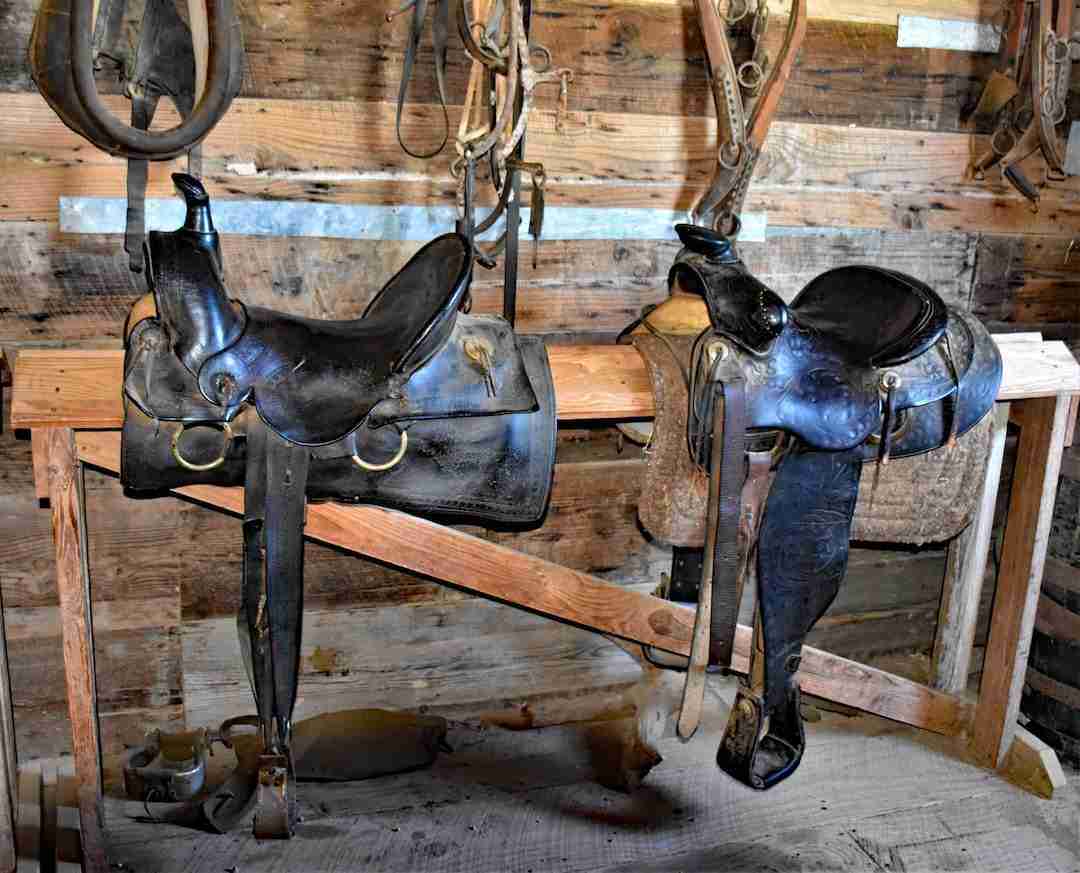If you have the opportunity to break your own horse under saddle, then take it from me; it is the most rewarding partnership between rider and horse. The special bond that you build with your horse is one that will be hard to break.
Steps To Breaking A Horse To Ride Are The Following:
Step 1: Gain The Trust Of The Horse
Step 2: Halter And Bridle Training
Step 3: Introducing The Horse To Lunging
Step 4: Introduction Of The Saddle
Step 5: Introducing The Rider And Weight
Step 6: Your First Ride

Step #1: Gain The Trust Of The Horse
Gaining the trust of your horse should start the moment he becomes yours. If you’re fortunate to get your horse at a young age, then you have plenty of time to get used to his moods and tell-tale signs of when he is scared or unhappy.
If you just got your horse, but they are at the right age to start breaking them in, do both your horse and yourself a favor and get to know each other and gain your horse’s trust before moving too quickly onto the next step.
Find time to bond with your horse while grooming; talk to your horse and let him get accustomed to your voice. Your voice will become a very important part of his training cycle and a way to calm him down and reassure him.
Like us, horses experience good and bad days, and learning their moods is important to understand their reactions. Horses are not robots and can have days when they don’t feel up to it, but they are willing animals when they trust you and will want to please their owners.
Once you understand your horse and have built a trusting bond with him, you can confidently move on to the next part.
Step #2: Halter And Bridle Training
Although you may have already trained your horse on a halter as they need to be held for the farrier or led to the camps for grazing, you may want to take it slowly when introducing a bridle and bit.
Don’t expect your horse to immediately accept the cold hard feel and taste of steel in his mouth; to him, this is a foreign and unnatural object. Try accommodating the training process with a bit that will be more appealing for the horse to accept, like a mouthing bit. A bit with a D-link or sweet copper middle link will allow your horse to play with the bit, and he will be more willing to accept the feel of it.
Lead your horse around in the bridle and practice putting it on and taking it off before moving on to the next step.
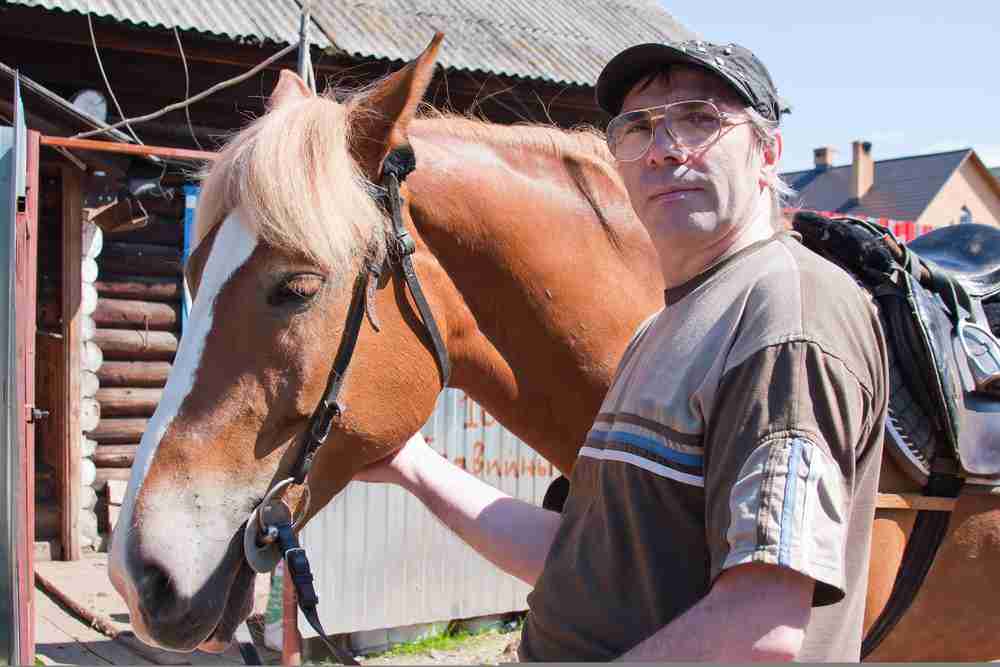
Step #3: Introducing The Horse To Lunging
Introducing your horse to lunging may take some time to get right. Do not attach the lunge directly to the side of the bit, as this may jerk the bit and scare your horse. If unsure, ask a professional or learn how to lung with a bit.
I personally prefer the option of looping the lunge rein over the poll and attaching it to the bit on the outside of the horse.
Start walking your horse and gradually move away from the horse while encouraging him to stay away from you on a circle with your lunge whip; this use of pressure training is rewarded once he obeys the command by releasing the pressure of the whip. Repeat this process until your horse understands what you are asking him to do.
Once your horse has started to lung and is calm and relaxed, you can start desensitizing the horse by introducing a saddle pad to his back that you gently put on and take off. After he is comfortable with the object on his back, add the lunge surcingle to tie down the saddle pad and imitate the pressure of a girth.
Start with gentle pressure, do not go and tighten the surcingle as your horse may react to the pressure. Once comfortable, walk him around and start-up on the lunge again.
At this point, your horse should be comfortable with feeling pressure over his back and will be desensitized to objects across his back. This is a good time to introduce some weight to his back.
At this stage, it is a good idea to have a friend or trainer assist you by gently leaning over your horse; as he accepts the weight, your friend can gently lead the horse forward, taking a few steps and progressing to a full circle over a few days.
Once your horse has mastered that feeling, you can confidently move on to the next step of introducing the saddle.
Other Articles You Maybe Interested In:
- Why Horses Show Their Teeth
- What Are Ergots And Chestnuts On Horses?
- What Is A Grulla Quarter Horse?
- Who Is The Boss Mare And What She Means To The Herd
- Why Do Horses Nod Their Heads: 13 Factual Reasons
Step #4: Introduction Of The Saddle
Introducing the saddle to the horse can cause them to shy away as they see this bulky item being flung onto their backs. Remember, horses are prey animals and will have a flight reaction to what they perceive as a threat.
Gently and slowly approach your horse and delicately put the saddle onto his back, tie up the girth and once again take your horse for a walk to let him get accustomed to the weight and feel of the saddle.
As he gets used to the saddle, start lunging him in a trot and canter with the saddle. Remember to remove the stirrups to prevent them from flapping and scaring your horse.
Once your horse has graciously accepted the saddle, it’s time to start the fun part and introduce the rider.
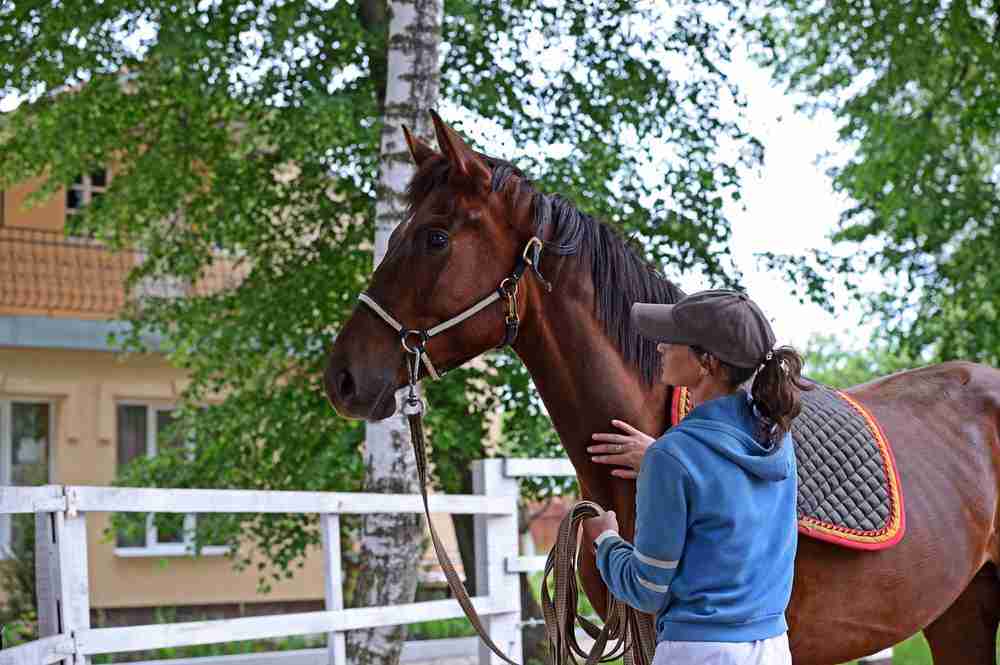
Step #5: Introducing The Rider And Weight
This is the stage when the real fun begins, and if you have successfully and gradually worked through the steps to this point, then chances are that your horse will be accepting of your climbing aboard.
Start next to a mounting block and lay over the saddle while someone leads you around in a circle until your horse is comfortable.
Next, from the mounting block, slowly swing your leg over your horse’s back and sit on your saddle, do this exercise and few times.
Once your horse is happy with you on its back and doesn’t feel like a spring under pressure, you can gently pick up the reins and start using leg aids while someone gently persuades your horse forward on the lunge.
Your horse is now in the last stages of being broken under saddle, but it is still a new feeling for him, and you should take the time to positively reassure him with your voice and gentle touches.
Step #6: Your First Ride
Once your horse has accepted the process and you are finally one with your horse, it’s time to take it to the next step and enjoy the long partnership you and your horse will develop together.
Remember that this is the beginning of his training, and you should only ride him for about ten minutes at a time, gradually increasing the period until he has strengthened and become accustomed to the weight and exercise.
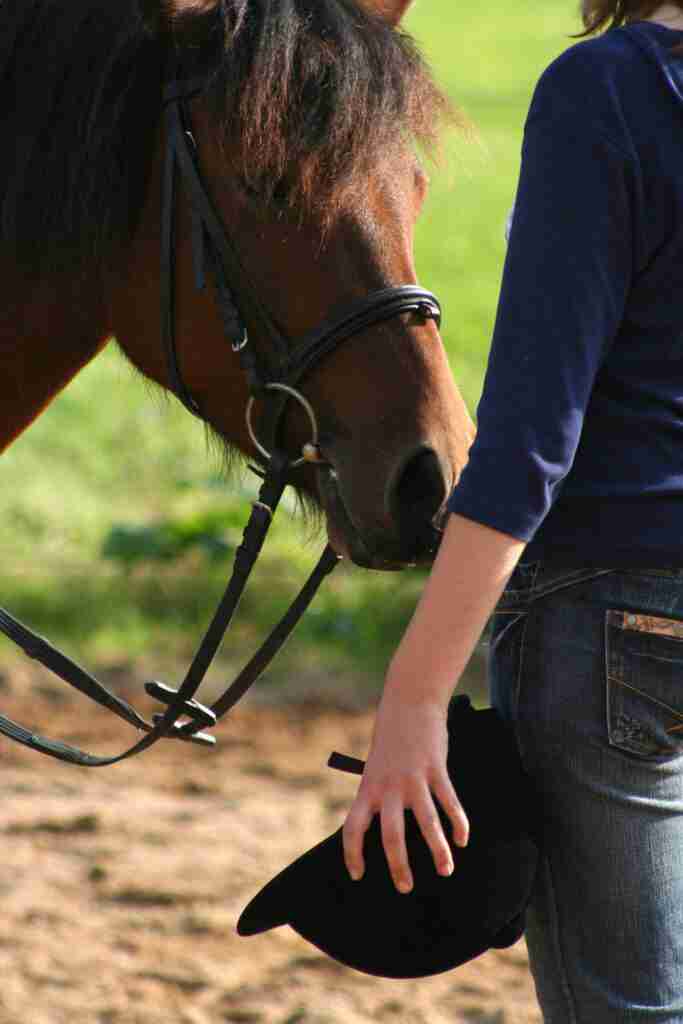
Breaking In A Horse To Ride
I was lucky enough to have the opportunity to break in my own colt, and the skill I gained from that experience stayed with me forever. This is something that, given the opportunity, you should do yourself and avoid sending your horse off to camp for someone else to break him in. For anyone wanting to experience this bond, I have listed the steps that will help you break your horse in.
Breaking in a horse takes time and patience. It is not something you can do in one hour; well, maybe you can but breaking a horse in from fear is not the relationship you are looking for. It will require your time and patience. If you are armed with those and have plenty of rewards for positive behavior, you will have a positive and successful experience
You want your horse to trust and follow you, so correctly breaking your horse is fundamental to creating a trusting and productive bond between you and your horse.
What Is The Right Age To Break In A Horse?
Each horse is different and matures at different ages. Thoroughbreds mature at a younger age and are normally broken in at an early age of about eighteen months to be ready for racing at two years old.
Warmbloods and draft horses mature a bit later, and the process with them starts from about three to four years of age. Each horse is different and learns at different paces, so understanding your horse and allowing them to be mature enough to accept the training is vitally important to a successful method.
Another important reason is to allow horses time to mature in their physical development. While horses are still growing, their knees will remain open, and breaking them in too early can impact the physical wellness of their joints.
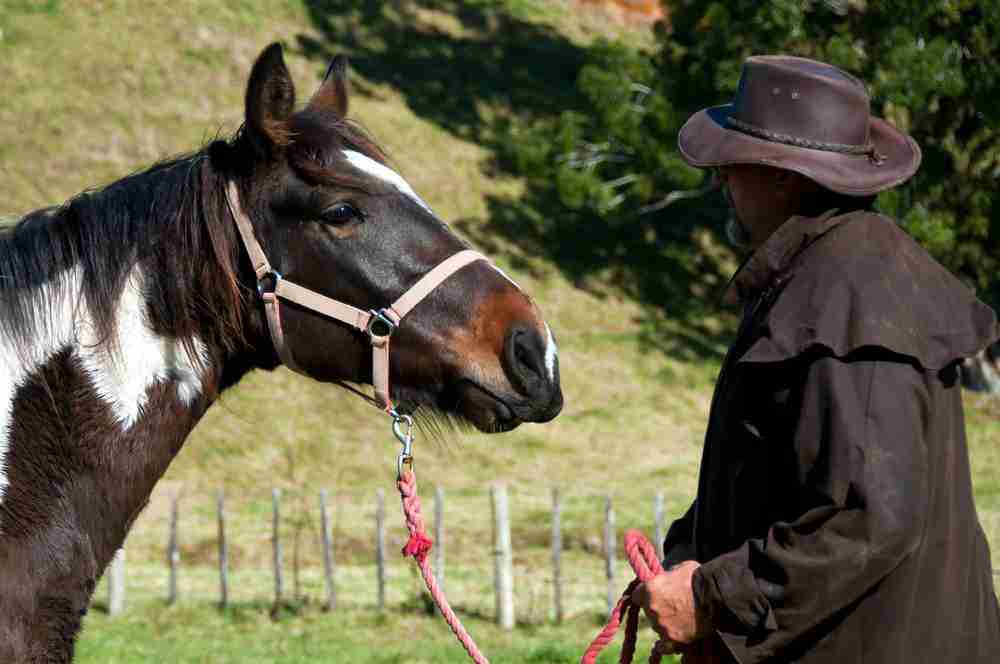
How Long Does It Take To Break A Horse In Properly?
As with anything else, time and patience will always deliver a better result. Each horse learns differently and at a different pace, so it is possible to break your horse under saddle within thirty days, but in general, the average time is ninety days.
Conclusion
Breaking in a horse should not be rushed, and following the correct steps from beginning to end will ensure that your horse trusts and follows you. These are prey animals, and jumping on their backs and holding on for dear life while you’re bucking bronco tires himself out is not the way to start the relationship.
Take your time to follow each step and never force your horse into doing something that he is uncomfortable with; rather, go back a step and end off with positive rewards before tackling the next step again.
Happy Riding!






